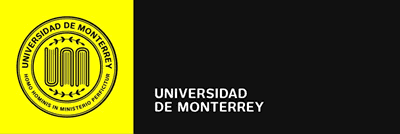Por favor, use este identificador para citar o enlazar este ítem:
http://repositorio.udem.edu.mx/handle/61000/3098| Tipo de documento: | bachelorThesis |
| Título : | Media´s influence in foreign policy design: |
| Otros títulos : | a comparative analysis Afghanistan and Iraq, 2001-2003 |
| Autor: | Rubio de la Garza, Gabriela María |
| Tutor : | Vila Freyer, Ana Beatriz |
| Palabras clave : | Relaciones internacionales;Administración pública internacional;Política internacional;Escuela internacional |
| Fecha de publicación : | 2012 |
| Editorial : | San Pedro Garza García: UDEM |
| Citación : | Rubio de la Garza, G. M. y Villa Freyer, A. B. (2012). Media´s influence in foreign policy design: a comparative analysis Afghanistan and Iraq, 2001-2003. [Tesis de Pregrado]. Repositorio UDEM. |
| Código: | 33409002807307 |
| Páginas: | 89 páginas |
| Resumen : | This project seeks to explain the role of the media in the design of foreign policy to inform and unify /divide public opinion in the war against terrorism. The investigation will compare the communication strategies followed by the Bush Administration from 2001 to 2003, years in which the U.S. government set out on two different military campaigns under the same 'war against global terror' banner, in an effort to understand what caused the public to support war in Afghanistan with a surprisingly unified public opinion, and why this could not be replicated for the war in Iraq effort. This investigation works on the constructivist assumption that ideas inform interests; in this sense, the American society had to first perceive something as important to then respond and act on it. Interests are not only informed by objective circumstances, but also by the way relevant actors interpret an issue. We take for granted the fact that globalization and other technological advances facilitate our access to information, yet these processes have become so fast and complex that the reception of images and information in real time has had an effect in the way foreign policy is designed-if only because of the fact that it shortens the time of response governments have to do so. Following this train of thought, the project will further assume that these above-mentioned conditions are implicitly constructed in the government-media interactions. A constructivist approach on international relations will help us understand how this symbiotic relationship pushes the state to interpret the world: by understanding the roots of a problem in a specific way and by giving the state reason to act. These actions work as a building block in the construction of ideas, values and culture reinforcement. The main hypothesis that the investigation seeks to reinforce is that foreign policy design from the war against terrorism was supported by the mediato promote a unifying speech that allowed the American people support military actions. As a consequence, this project will contribute to the literature that links issues in international relations to applied communication theories. There are a number of studies about the CNN effect and the war in Kosovo and Gulf war-yet little has been said about the relationship between the media and the foreign policy design in the war against terrorism. On a secondary effort, the investigation will try to reinforce the theory of frame-building in international relations. The decision to include this theory in IR studies is often popular as it is often a challenge to separate communication acts from political ones (more often than not, the lot is simply referred to as 'public relations'). This project proposes an alternative to the theories of international relations and foreign policy in which the latter is not solely defined by the material interests of a state (as Morgenthau and the realist school of thought would propose l) and, instead, suggests that the media is an actor with enough agency to influence-even if not determine-foreign policy decisions. This topic is relevant because, unlike severa) other issues of international relations, the link communication-foreign policy offers a down-to-earth perspective that seeks to explain a reality with which the population can identify. Furthermore, this issue possesses great importance mostly because (1) it recognizes the media as an emerging and relevant actor within the spectrum of foreign policy design and (2) because it explains the scope and limits of this relationship as it is applied to a case study. Fully understanding how foreign policy is designed may in fact bring us closer to understanding how actors-in the form of states, transnational organizations or institutions-can use andjor manipulate the media to favor their own preference. |
| Cod. Estudiante : | Gabriela María Rubio de la Garza 000000000 |
| URI : | http://repositorio.udem.edu.mx/handle/61000/3098 |
| Aparece en las colecciones: | Licenciatura en Estudios Internacionales |
Ficheros en este ítem:
| Fichero | Descripción | Tamaño | Formato | |
|---|---|---|---|---|
| 33409002807307.pdf | 26.09 MB | Adobe PDF |  Visualizar/Abrir |
Este ítem está sujeto a una licencia Creative Commons Licencia Creative Commons

